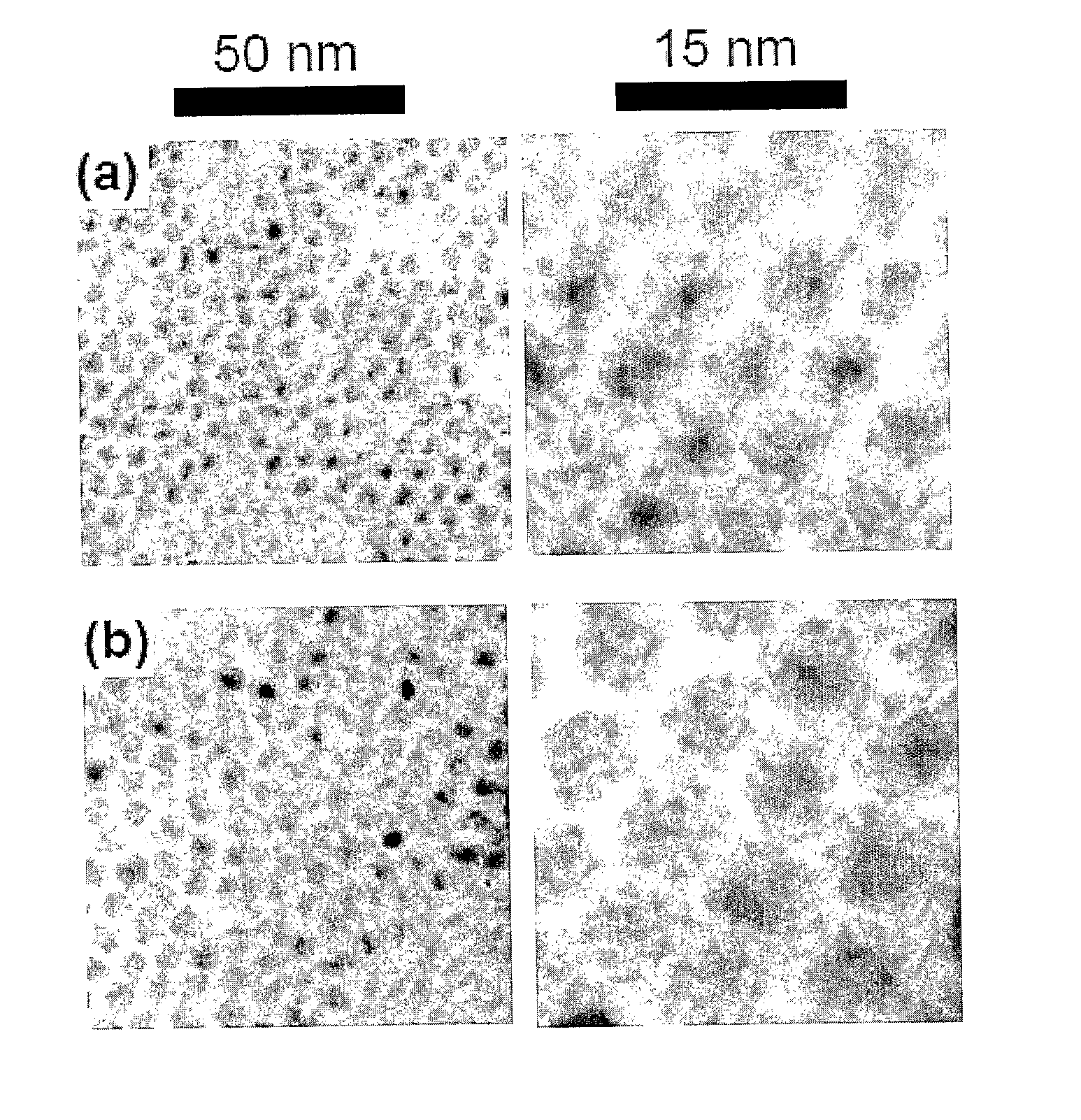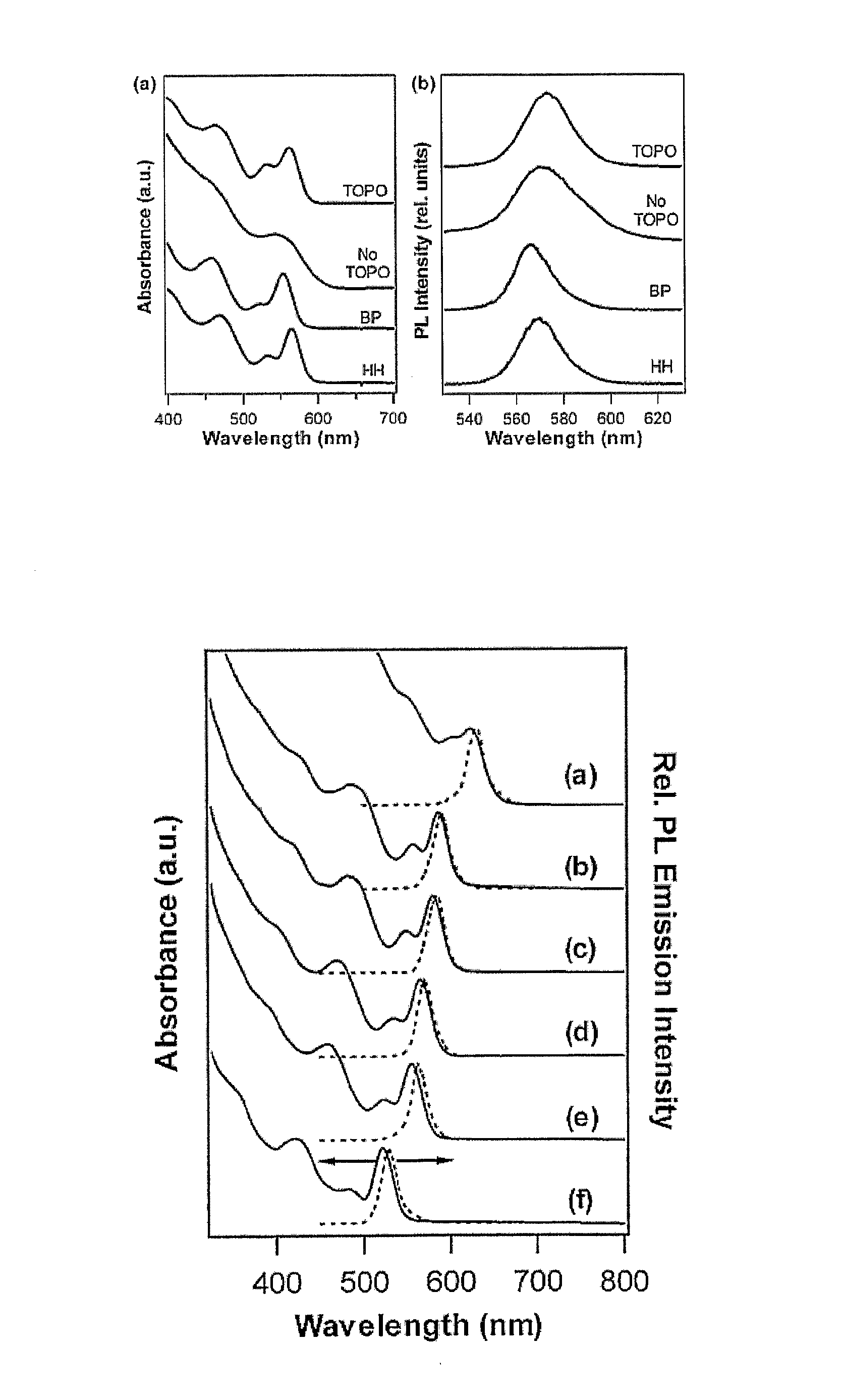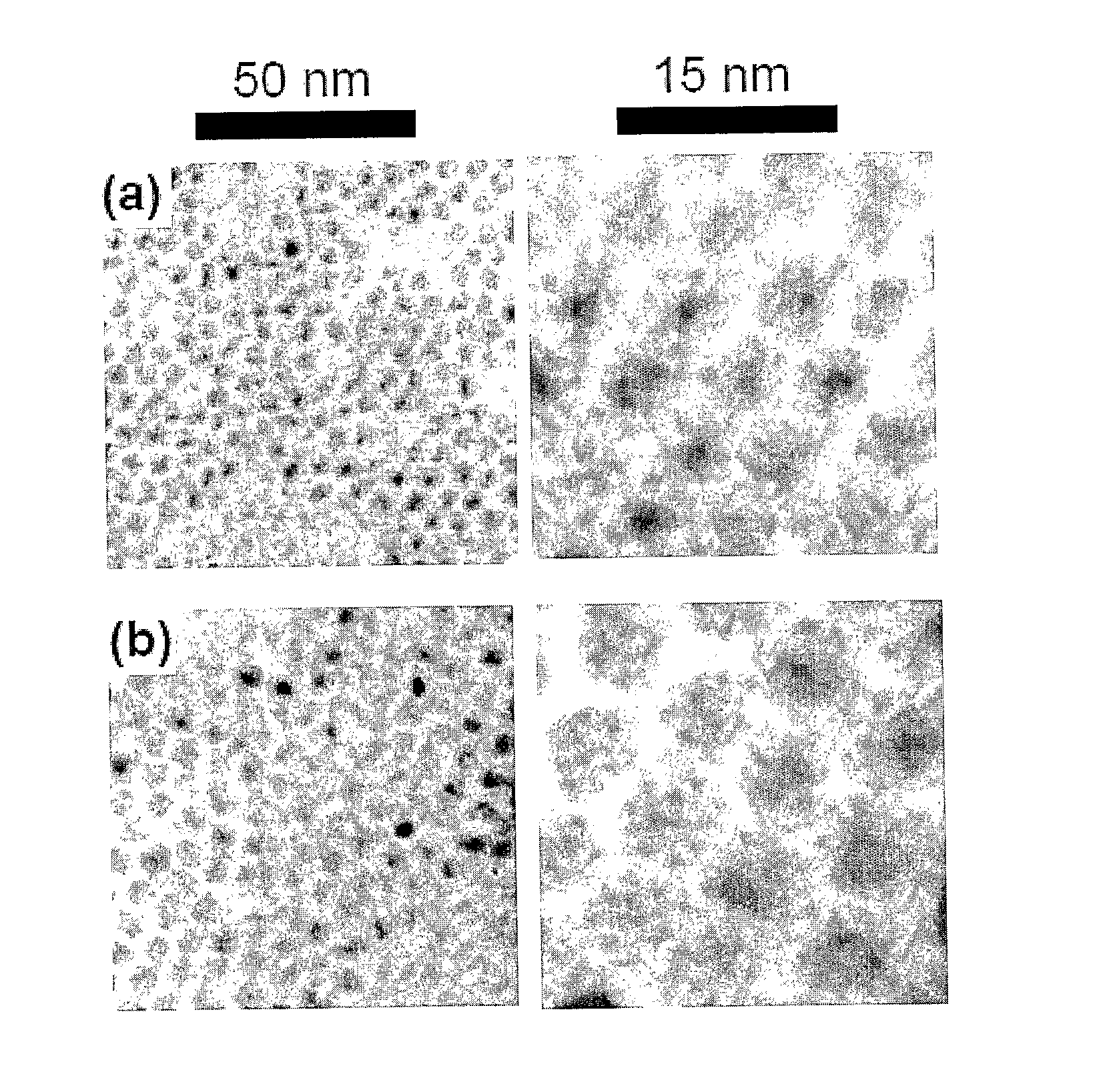Method for Producing Highly Monodisperse Quantum Dots
a quantum dots, monodisperse technology, applied in the direction of copper compounds, nanoinformatics, mercury compounds, etc., can solve the problems of air- and water-sensitive organometallic precursors, explosion hazards, hazardous procedures, etc., to reduce or eliminate the need for use, less solvent, and less expensive
- Summary
- Abstract
- Description
- Claims
- Application Information
AI Technical Summary
Benefits of technology
Problems solved by technology
Method used
Image
Examples
example 1
[0042] Chemicals Trioctylphosphine oxide (TOPO), trioctylphosphine (TOP), hexadecylamine (HDA), octadecene (ODE), stearic acid, and Se powder were purchased from Aldrich Cd(ClO4)2—H2O, methanol, chloroform, and acetone were purchased from Fisher Scientific, Inc.
[0043] Cadmium stearate preparation. Stearic acid (1 mmol) was reacted with 1 mmol NaOH in hot deionized water. After the stearic acid is completely dissolved in this water solution, 1.1 mmol Cd(ClO4)2 was added to the solution with vigorous stirring. Cadmium stearate quickly precipitated from this solution. After cooling to room temperature, cadmium stearate was vacuum filtered and dried.
[0044] Nanocrystals synthesis Cadmium stearate (0.1 mmol), TOPO (0.25 g), HDA (1 g), and ODE (10 mL) were dried and degassed in a reaction flask by heating to 150° C. for 30 minutes under a stream of argon. The temperature was then raised slowly to 320° C. under 1 atm Ar, and 1 mmol Se powder which had been dissolved in hot TOP was injecte...
example 2
[0046] All chemicals were used as received without further purification. Selenium powder (99.999%), octadecane (ODA) 99%, technical grade tri-octylphosphine oxide (TOPO) 90%, technical grade 1-hexadecylamine (HDA) 90%, benzophenone (BP) 99%, hexadecyl hexadecanoate (HH) 98%, trioctylphosphine (TOP), and stearic acid 98+% were obtained from Aldrich. Cadmium perchlorate was obtained from Alfa Aesar. Chloroform (reagent. A.C.S) was obtained from Spectrum Chemical Mfg. Corp. Methanol (HPLC) was obtained Fisher Scientific. Cadmium stearate was prepared by combining Cd(ClO4)2.6H2O with stearic acid in hot de-ionized water (18.5 MΩ).
[0047] A typical synthesis is as follows: Cadmium stearate (0.1 mmol), HH (0.1 g), HDA (1 g) and ODA (5 g) were dried and degassed in a reaction flask by heating to 200° C. for 30 min under a stream of argon. The temperature was then raised quickly to 320° C. under 1 atm Ar, and 1 mmol Se dissolved in a few milliliters TOP was injected quickly by syringe into ...
PUM
 Login to View More
Login to View More Abstract
Description
Claims
Application Information
 Login to View More
Login to View More - R&D
- Intellectual Property
- Life Sciences
- Materials
- Tech Scout
- Unparalleled Data Quality
- Higher Quality Content
- 60% Fewer Hallucinations
Browse by: Latest US Patents, China's latest patents, Technical Efficacy Thesaurus, Application Domain, Technology Topic, Popular Technical Reports.
© 2025 PatSnap. All rights reserved.Legal|Privacy policy|Modern Slavery Act Transparency Statement|Sitemap|About US| Contact US: help@patsnap.com



